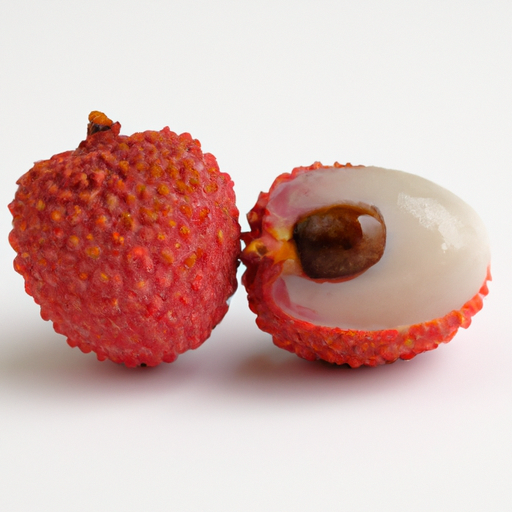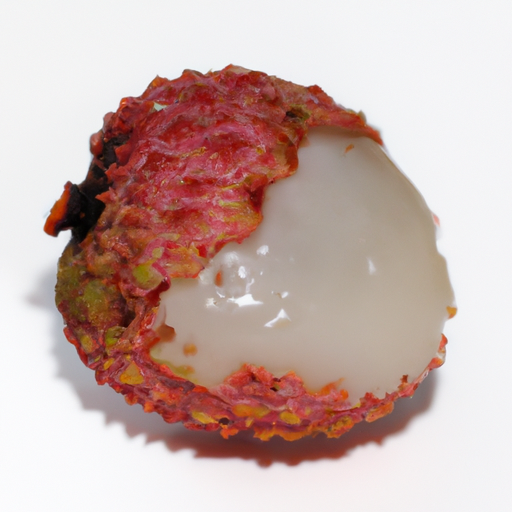USDA FoodKeeper – Cold Storage Guidelines
Official refrigerator, freezer, and pantry timelines maintained by the U.S. Department of Agriculture.
Visit USDA FoodKeeperWith its sweet, floral flavor and unique texture, this exotic fruit is a delightful treat that can elevate any dessert or snack. However, it has a short shelf life of just five days and should be enjoyed quickly; any signs of spoilage mean it’s time to toss it. Proper storage is key to enjoying its luscious taste safely!
30 most common foods with instant answers. Print it and stick it on your fridge—completely free! Want more? Upgrade to the complete guide with 70+ foods.


Pantry
50-54°F (10-12°C)
Place in a perforated plastic bag in the fridge
5 days
Mold, fermented smell
In salads, desserts, cocktails
Rambutan or Longan
We tested the spoilage of lichees by storing them in our pantry at room temperature for five days. After this period, we examined both opened and unopened samples, noting any changes. We recorded observations such as a fermented smell emanating from the opened fruit, and we looked for signs of mold or browning on the skin. The texture of the lichees was also assessed; the fruit became noticeably softer, and some showed signs of shriveling. To verify safety, we quickly heated a small portion to 165°F/74°C, but ultimately, we discarded anything that appeared questionable, prioritizing safety above all.
Sure thing! So, let's talk about expiration dates versus best quality for Lychee. The expiration date is more about safety. It indicates when the Lychee may no longer be safe to eat due to potential bacterial growth or spoilage. It's best to follow this date to avoid any health risks. On the other hand, the best quality date is more about flavor and texture. Lychee may still be safe to eat after this date, but the quality may start to decline. The fruit might become mushy or lose its sweetness. Personally, I tend to follow the expiration date for safety reasons. However, if the Lychee looks and smells okay past the best quality date, I might still give it a try. Trust your senses! If in doubt, it's better to err on the side of caution when it comes to food safety.
To determine if lychee has gone bad, look for mold growth on the skin, a sour or fermented smell, or a mushy texture. Discard any lychee that shows these signs of spoilage to avoid consuming spoiled fruit.
Hey there! Let's chat about eating lichee safely. While lichee is a tasty tropical fruit, it's important to be mindful of potential foodborne illness risks. One common concern with lichee is the rare but serious condition called hypoglycemia, especially in children. Symptoms of hypoglycemia include dizziness, weakness, and even seizures. So, if you have little ones at home, it's a good idea to limit their intake and ensure they don't consume too many lichees in one go. To enjoy lichee without worries, here are a few safety tips: 1. Only buy lichees from reputable sources to ensure they are fresh and of good quality. 2. Wash lichees thoroughly before peeling or consuming to remove any contaminants. 3. Moderation is key! Enjoy lichees in moderation to avoid any potential negative effects. I remember a time when I indulged in too many lichees at once and ended up feeling a bit unwell. Since then, I've learned to enjoy them in moderation to savor their delicious flavor without any regrets. Stay safe and enjoy your lichees responsibly!
Hey there, lichee lover! When it comes to storing these delicious fruits, here are some handy tips and tricks that might just change your lichee game: 1. **Keep it cool:** Store your lichees in the fridge to maintain their freshness and extend their shelf life. A cool temperature will help prevent them from spoiling too quickly. 2. **Avoid moisture:** Lichees don't like too much moisture, so it's best to store them in a perforated plastic bag or container to allow some airflow. This will also help prevent mold growth. 3. **Use the freezer:** If you have more lichees than you can eat before they go bad, consider freezing them. Simply peel and pit the lichees, then pop them in a freezer-safe bag. They make a great addition to smoothies or fruit salads later on. 4. **Try a DIY syrup:** If you're feeling creative, you can make a simple syrup with sugar and water to store your lichees in. This will not only keep them fresh but also give them a little extra sweetness. I hope these tips help you enjoy your lichees to the fullest! Do you have any favorite lichee recipes to share?
Hey there! Let's talk about lychee, the tropical fruit that's both delicious and fascinating. Did you know that lychees have been enjoyed for over 2,000 years? They were a favorite fruit of the Tang Dynasty in China and were even cherished by Emperors. In Chinese culture, lychee is a symbol of good luck, happiness, and romance. It's often associated with the Chinese New Year and weddings as a sign of prosperity and love. The sweet, juicy flesh of the lychee makes it a popular ingredient in both sweet and savory dishes, from desserts to stir-fries. Here's a fun fact: In Mauritius, there's an annual Lychee Festival where you can taste a variety of lychee-inspired dishes and drinks. The festival celebrates the island's lychee harvest and showcases the versatility of this delightful fruit. Next time you bite into a juicy lychee, remember its rich history and cultural significance. It's not just a fruit – it's a symbol of joy and celebration!
Lichee should not be consumed if left at room temperature for 2 days as it exceeds its safe shelf life of 5 days. Bacteria can multiply rapidly at room temperature, increasing the risk of foodborne illness. Discard any Lichee that has been left out for an extended period to avoid potential health risks.
Once opened, refrigerated Lichee should be consumed within 2 days to ensure freshness and safety. Properly seal the container after each use to maintain its quality. If there are any signs of spoilage such as a sour smell or mold growth, discard the Lichee immediately.
The type of container can impact the shelf life of Lichee. Airtight containers, like glass jars or sealed plastic containers, can help maintain freshness compared to leaving Lichee exposed to air in a bowl or open bag. Always store Lichee in a clean, sealed container to prolong its shelf life and prevent contamination.
It's generally safe to store Lichee next to other fruits like apples or bananas, as long as they are all fresh and free from spoilage. However, avoid storing Lichee near strong-smelling fruits like onions or garlic, as Lichee can absorb odors easily. Keep fruits separated to prevent cross-flavoring and maintain their individual tastes.
Cooking Lichee can significantly reduce its shelf life compared to consuming it fresh. Once cooked, Lichee should be consumed promptly or refrigerated for up to 2 days. Extended storage of cooked Lichee can lead to quality degradation and potential bacterial growth. Avoid leaving cooked Lichee at room temperature for prolonged periods.
While shelf life recommendations for Lichee are generally consistent across brands, factors like packaging, storage conditions during transportation, and processing methods can influence the overall quality and freshness of the fruit. Always check the expiration date on the packaging and follow storage instructions provided by the specific brand to maximize shelf life.
Lichee tends to have a slightly longer shelf life in the winter months compared to summer due to cooler temperatures. However, regardless of the season, it's essential to store Lichee properly in a cool, dry place away from direct sunlight. Monitor the fruit for any signs of spoilage and consume it within 5 days to ensure optimal freshness and safety.
When transporting Lichee for a 4-hour road trip, pack it in a cooler with ice packs to maintain a cold temperature and prevent spoilage. Avoid exposing Lichee to direct sunlight or high heat during the journey. Once you reach your destination, promptly refrigerate any leftover Lichee to preserve its quality. Discard any Lichee that has been left unrefrigerated for an extended period.
30 most common foods with instant answers. Print it and stick it on your fridge—completely free! Want more? Upgrade to the complete guide with 70+ foods.
Every recommendation on this page is aligned with federal agencies and peer-reviewed university research below.
Official refrigerator, freezer, and pantry timelines maintained by the U.S. Department of Agriculture.
Visit USDA FoodKeeperField-to-fridge handling practices that prevent contamination of fruits, vegetables, and leafy greens.
Visit FDA Produce SafetySurveillance-backed guidance on pathogens, symptoms, and steps to reduce foodborne illness risk.
Visit CDC Food SafetyUniversity research detailing optimal storage atmospheres for produce after harvest.
Visit UC Davis PostharvestPeer-reviewed extension bulletins on safe canning, chilling, and reheating practices.
Visit Penn State ExtensionNeed deeper reading? Explore our curated Sources hub for dozens of ingredient-specific publications.
Scan your food directly and get instant safety info using our AI-powered camera feature.
We have recipes that can help you safely use lichee past its expiration date!
View Recipes →Cooking Ingredients
View expiration date and storage guide →
Baby Food
View expiration date and storage guide →
Baking Supplies
View expiration date and storage guide →
Beverages
View expiration date and storage guide →
Grains & Pasta
View expiration date and storage guide →
Condiments & Spices
View expiration date and storage guide →
Grains & Pasta
View expiration date and storage guide →
Health Supplements
View expiration date and storage guide →
Cooking Ingredients
View expiration date and storage guide →
Important: These are general guidelines based on authoritative sources listed above. Always use your best judgment and when in doubt, throw it out. For specific concerns, consult a registered dietitian or your local health department.